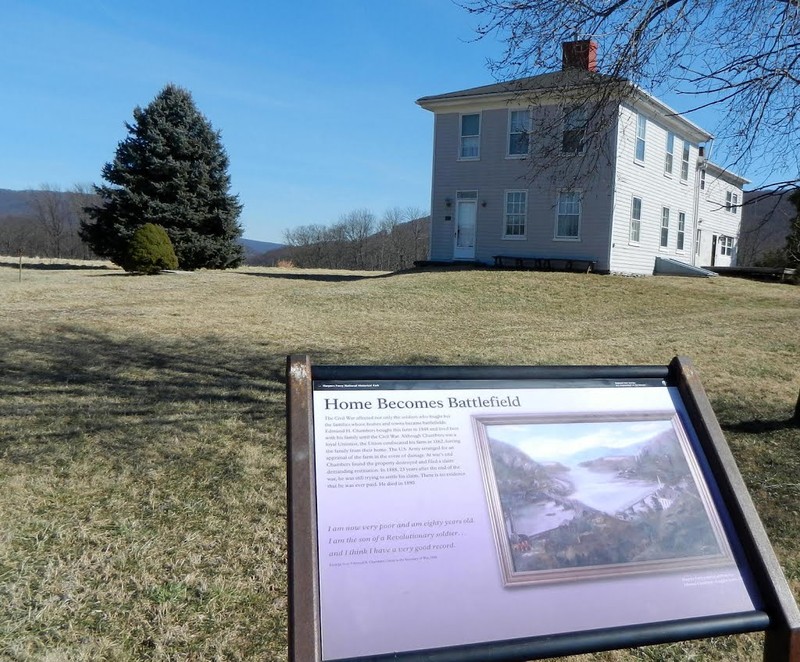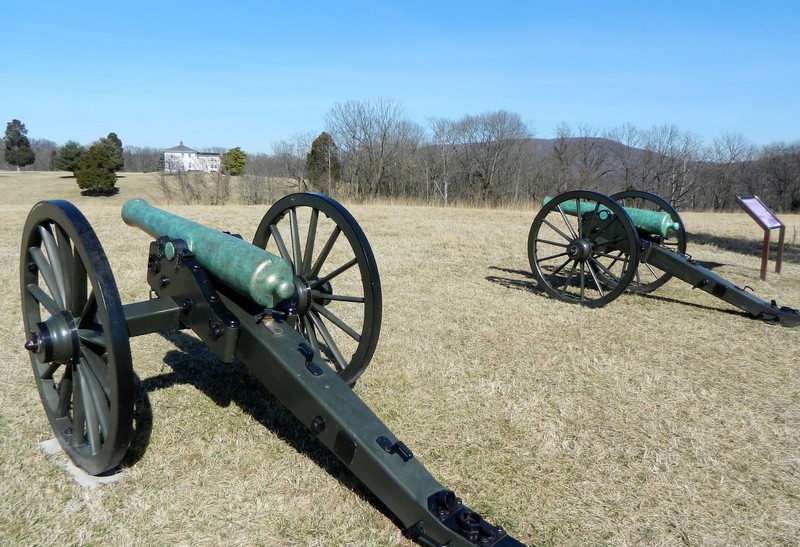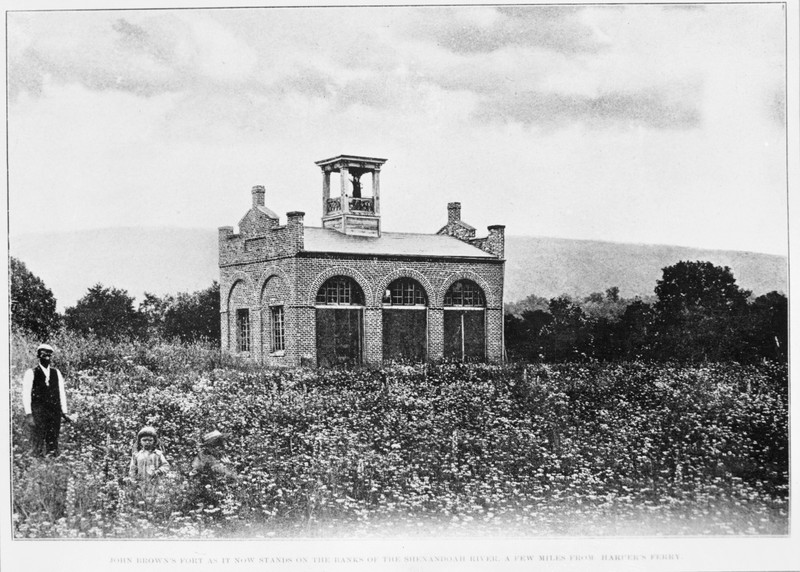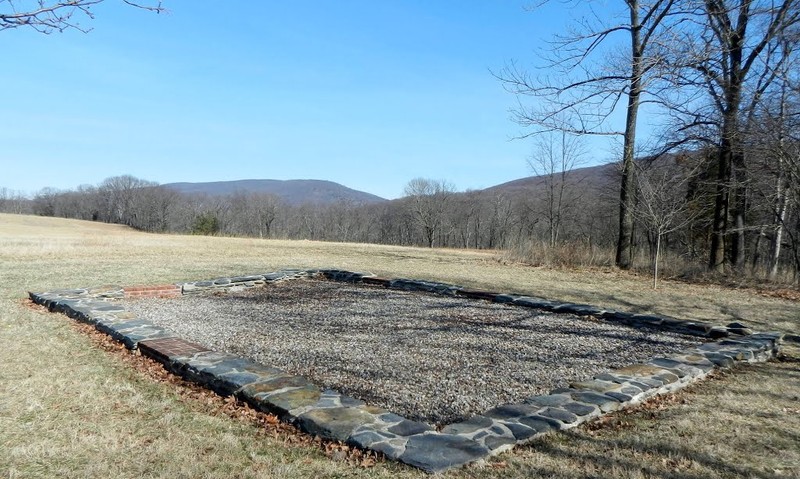Murphy Farm
Introduction
Text-to-speech Audio
Images
The Murphy Farm House, now restored, was built by Alexander Murphy in 1869. Image obtained from Panoramio.

By placing cannon at the summit of the farm, the Confederate forces were able to force the Union side into surrender at the Battle of Harpers Ferry. Image obtained from Panoramio.

From 1895 to 1909 John Brown's Fort sat on a field at the Murphy Farm. Image obtained from the National Park Service.

Today an outline of the foundation remains to show where John Brown's Fort once stood. Image obtained from Panoramio.

Backstory and Context
Text-to-speech Audio
The property that is today Murphy Farm was purchased by Edmund H. Chambers in a public auction in February 1848, where he established a farm. Around that time the place was referred to in records as “Buena Vista.” In 1862 the Union army confiscated the farm from the Chambers, despite them being Union supporters. The property and its house would be mostly destroyed over the course of the Civil War. After the war Edmund Chambers tried unsuccessfully to get compensation from the government for many years as a result of the damages. In 1869 he ended up selling the farm to Alexander Murphy. Murphy would construct the farm house that still stand to this day.
Murphy Farm played a crucial role in the Battle of Harpers Ferry from September 12 to September 15, 1862. While invading Maryland in the beginning of September, Gen. Robert E. Lee decided to divide his army into four sections. He dispatched a portion of his forces under the command of Gen. Thomas “Stonewall” Jackson to seize Harpers Ferry, where a Union garrison was stationed. On September 14 Jackson’s forces captured the Loudon Heights, Maryland Heights, and School House Ridge, from which they were able to strike the Union garrison with artillery fire. Believing that the bombardment would not be able to defeat the Union force quick enough, Jackson ordered a flanking maneuver at Bolivar Heights. A force of 20 cannon and 3,000 troops led by Gen. A. P. Hill positioned themselves at the summit of Murphy Farm, aimed at the exposed left flank of the Union forces. By the morning of September 15 the Union garrison of 12,700 troops had capitulated; it would be the largest surrender of Union forces during the whole war. Later in August 1864, when Harpers Ferry was once again in Union possession, Gen. Philip H. Sheridan constructed a redoubt on the farm, as part of a larger two-mile series of earthworks defenses on Bolivar Heights.
In 1895 the Murphy Farm became the new site of the old U.S. Armory’s engine house, more commonly known as John Brown’s Fort. The building became famous in 1859 when John Brown and his followers barricaded themselves there towards the end of their failed raid on the armory. In 1892 the fort was purchased and brought to Chicago to be displayed during the World’s Columbian Exposition. Low attendance caused it to be mothballed and in 1895 a campaign was organized by journalist Kate Field to return the fort to Harpers Ferry. The original site of the fort had been obscured by new train tracks, so the Murphy family deeded five acres of land on their farm to be set aside for the placement of the fort.
In August 1906 the Niagara Movement, a precursor to the NAACP, held their conference at Harpers Ferry. On the morning of August 17 members of the Movement made a barefoot pilgrimage to the fort to pay respects to John Brown for his efforts to end slavery. The procession walked single-file around the fort, singing “John Brown’s Body” and “Battle Hymn of the Republic.” In 1909, concern over the fort being neglected (the Murphys were reportedly using it to store wheat) led Storer College to purchase the building and move it to their campus.
The Murphy Farm remained in the possession of the Murphy family throughout the twentieth century. In 1999 it was reported that developers were seeking to acquire the property and convert it into a massive housing development. Over 7,000 objections were lodged by both organizations and members of the public seeking to preserve the historic site. In October 2002 the Trust for Public Land purchased the farm from the Murphy heirs and immediately transferred it to the National Park Service. Murphy Farm was officially incorporated into Harpers Ferry National Historical Park on December 31, 2002. Today the Murphy Farm is open to the public. It features a hiking trail; the restored farm house; a foundation outline of where John Brown’s Fort once stood; as well as markers and cannons depicting the farm’s role during the Civil War.
